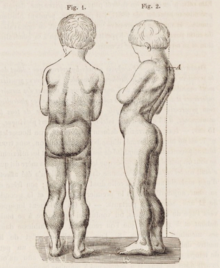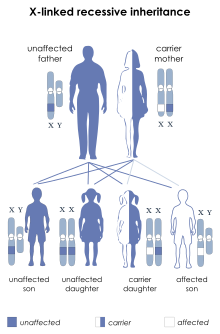David Gardner-Medwin
David Gardner-Medwin FRCPCH | |
|---|---|
 David Gardner-Medwin in 1997[1] | |
| Born | 13 November 1936 London, UK |
| Died | 14 June 2014 (aged 77) |
| Nationality | British |
| Education | |
| Occupation | Neurologist for children |
| Medical career | |
| Profession | Physician |
| Research | Duchenne Muscular Dystrophy |
David Gardner-Medwin
In the 1960s, working as a research fellow with neurologist John Walton, he studied the genetics and clinical features of the diseases of muscles, particularly relating to the identification of female carriers of DMD.
Parallel to his career in medicine was his interest in natural history and involvement with the Natural History Society of Northumbria, the binding and restoration of books and studies on Thomas Bewick. He finished a study of Bewick's family history and contributed to the Bewick Birthplace Trust's campaign to preserve Bewick's birthplace of Cherryburn in Northumberland.
Early life and education
David Gardner-Medwin was born on 13 November 1936 at
He gained admission to study
Career


Gardner-Medwin completed his
After spending some time in adult neurology, paediatrics and child psychiatry, he was awarded a neurology fellowship in Boston, working with Raymond Adams at the Massachusetts General Hospital and Charles Barlow at Boston Children's Hospital. In 1971 he returned to Newcastle and the following year was appointed the first consultant paediatric neurologist to the northern region, where for many years, he served as the only neurologist for children for a population of 3.5 million.[7][9][10]
To his colleagues he became known as DGM and is credited with introducing multidisciplinary care and nocturnal ventilation to the management of boys with DMD. During his career at Newcastle, the chances of survival for children with DMD improved from 0% to reaching age 25 years in the 1960s to 12% in the 1980s, and 53% after 1990.[6][11] Despite the initial classification of limb–girdle muscular dystrophy by Walton in the 1950s, both Walton and Gardner-Medwin challenged the term by 1994, describing that some of the features in this group of muscle disorders disguised other conditions, and they "recognize[d] that research in this long neglected group of muscular dystrophies is still in an early and transitional stage".[12] When he retired at the age of 60, four consultants were appointed to replace him.[6]
Later life
In 1997 he attended the public enquiry on the expansion of military use of the Otterburn Moors in the Cheviot Hills, and his comments led to mitigation of the impact of the army's manoeuvres upon wildlife in Northumberland.[1][13]
He co-founded the British Paediatric Neurology Association and later became its secretary and treasurer. He then became secretary of the Mac Keith Press, which publishes work on neurological conditions of children.[7]
Natural history
Parallel to his career in medicine was his interest in natural history and in the binding and restoration of books. In 1966 he became involved with the Natural History Society of Northumbria, for which he was once chairman of its library committee and later chairman of its council. He also became president of the Friends of the Newcastle University Library.[5] He finished a study of Bewick's family history and contributed to the Bewick Birthplace Trust's campaign to preserve Cherryburn and promote Bewick's works, and he later became vice president of the Thomas Bewick Society.[5][6][7]
Personal and family
He met Alisoun Shire when he was at Cambridge and they married in the chapel of King's College. They had two children, including Janet who became a paediatrician.[5][7]
Gardner-Medwin died from leukaemia on 14 June 2014, at the age of 77.[6][14]
Selected publications
- Gardner-Medwin, David (1968). "Studies of the carrier state in the Duchenne type of muscular dystrophy" (PDF). S2CID 6205380.
- Gardner-Medwin, David; Walton, JohnN (18 January 1969). "Myokymia with impaired muscular relaxation". The Lancet. 293 (7586): 127–130. PMID 4178245.
- Gardner-Medwin, David (May 1980). "Clinical features and classification of the muscular dystrophies".
- Gardner-Medwin, David; Johnston, Heather M. (1 April 1984). "Severe muscular dystrophy in girls". Journal of the Neurological Sciences. 64 (1): 79–87. S2CID 6205380.
References
- ^ a b Dixon, Hugh (Spring 2015) "A man for all seasons; David Gardner-Medwin, Cherryburn and the Bewick Society". Cherryburn Times. The Journal of The Bewick Society. Vol. 6, No. 7.
- ISBN 978-0-19-861412-8. Retrieved 10 October 2020.
- ^ "Dictionary of Scottish Architects - DSA Architect Biography Report". www.scottisharchitects.org.uk. Retrieved 20 October 2020.
- ^ Holmes, June (2014) "Dr David Gardner-Medwin (1936–2014)"[permanent dead link]. Natural History Society of Northumbria
- ^ a b c d e f g Tribute to David Gardner‐Medwin. Janet Gardner‐Medwin 27 June 2014
- ^ S2CID 72596231.
- ^ a b c d e f g John Walton, Baron Walton of Detchant. "David Gardner-Medwin | RCP Museum". history.rcplondon.ac.uk. Archived from the original on 10 October 2020. Retrieved 9 October 2020.
- S2CID 6205380.
- S2CID 72732285.
- PMID 27858766.
- S2CID 13229810.
- ISBN 978-0-521-65062-5.
- ^ Woodward, Rachel (1998). The Otterburn Training Area and the 1997 Public Inquiry. University of Newcastle, School of Agriculture, Food and Rural Development.
- ^ "David Gardner-Medwin – obituary". The Telegraph. 2 July 2014. Retrieved 9 October 2020.
